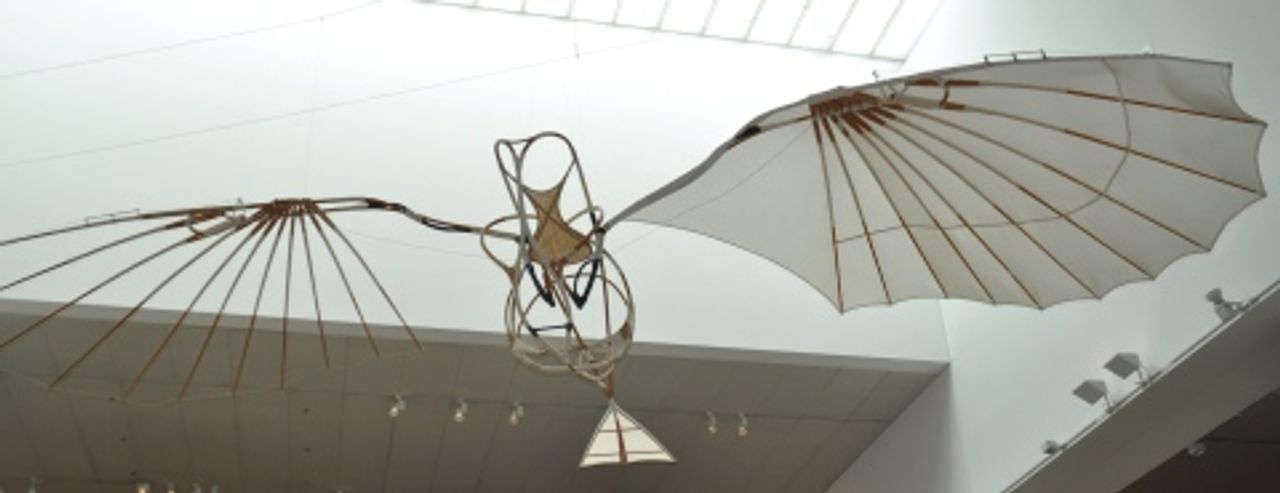
Vladimir Tatlin’s Vision for Ukraine

Vladimir Tatlin and the Reclamation of a Constructivist Legacy in Kyiv
In the history of 20th-century art, few figures loom as uniquely visionary as Vladimir Tatlin, a pioneer of Constructivism whose ideals married art, engineering, and social purpose. With the exhibition Tatlin: Kyiv at the Ukrainian Museum in New York, a crucial, often-overlooked chapter of Tatlin’s life and work has been revisited and restored: his transformative two-year period in Kyiv (1925–1927). This first North American exhibition devoted to the artist emphasizes Tatlin’s Ukrainian roots and his influence as a mentor, designer, and visionary — offering a timely recontextualization of his legacy in the midst of ongoing geopolitical strife.
Vladimir Tatlin: More Than a Russian Visionary
Born in 1885 in Kharkiv, now Ukraine, Tatlin has long been associated with Russian avant-garde movements. However, the exhibition takes care to underscore his Ukrainian identity, noting his given name as “Volodymyr” and reclaiming him within the narrative of Ukrainian cultural history. His background — a mechanical engineer father and a poet-revolutionary mother — seamlessly infused his practice with a balance of precision, creativity, and political consciousness.
His most famous work, “Monument to the Third International” (1919–20), a never-built spiral tower intended to represent Soviet modernity, illustrates Tatlin’s visionary ambitions. Likewise, his later project “Letatlin” (1930–32), a bird-like, human-powered flying machine, showcased his utopian fusion of human ingenuity with natural form and movement. These conceptions, powered by an idealistic belief in progress and collective uplift, defined the core principles of Constructivism — a movement that emphasized utilitarian, socially relevant art and design.
Tatlin in Kyiv: A Time of Experimentation and Education
Tatlin’s tenure at the Kyiv Art Institute marked a foundational moment in Ukrainian modernism. Between 1925 and 1927, he directed the Institute’s theater, photography, and film department while mentoring a generation of progressive artists and designers. His approach integrated technology, design, and performance, expanding traditional disciplines into a comprehensive, interdisciplinary practice.
Tatlin’s teaching emphasized collaboration, purpose, and the integration of art into everyday life. His students — such as Semen Mandel and Valentyn Borysovets — went on to produce inventive and bold works in graphic design, costume, and architecture. Their works, showcased in the exhibition, reflect a fidelity to Constructivist values but also bear traces of the uniquely Ukrainian sensibility that Tatlin cultivated during his time in Kyiv.
The Kyiv Years Rediscovered
Despite his contributions, Tatlin’s chapter in Kyiv remained largely obscured due to Soviet suppression of Ukrainian cultural narratives. This exhibition seeks to fill that void. Through a combination of original works, reconstructions, photographs, and documentation, the show builds a vibrant picture of Tatlin’s Kyiv life and its cultural significance.
Among the highlights are recreated designs for the avant-garde cinema magazine Kino and stage sets for theatrical productions. A rare photo captures Tatlin playing the bandura, a traditional Ukrainian string instrument — a poignant image bridging national identity with artistic expression.
The centerpiece of the exhibition is a haunting recreation of Tatlin’s studio in Kyiv. Based on written descriptions by his student Hanna Behicheva, curator Peter Doroshenko has conjured a space that radiates imagination and melancholy. Footage of a bird — referencing the wounded stork that inspired the Letatlin — is projected onto the bed, while birdsong echoes overhead. Above hangs the Letatlin itself, an embodiment of hope aloft in the air.
A Legacy Shaped by Vision and Oppression
Tatlin’s post-Kyiv life underscores the tragedy of curtailed potential. By the late 1920s, the Soviet Union had pivoted from avant-garde experimentation to the rigid directives of Socialist Realism. Abstraction and innovation were deemed unfit for political messaging. Tatlin moved to Moscow and lived in obscurity, exhibiting only once before his death in 1953. Much of his studio was discarded; little documentation remains of Tatlin in Kyiv.
Curators Tetyana Filevska and Doroshenko use this lacuna to powerful effect. Rather than filling all the gaps, they embrace them, using absence to illuminate the violent erasure of artistic freedom and integrity. The show pulses with the energy of what might have been — and what could still be, given careful stewardship of culture and history.
Design as a Reflection of Ideals
The exhibition itself is designed to echo Tatlin’s Constructivist principles. Vitrines are angled and dynamic, recalling the energetic diagonals of his drawings. Primary colors — red, blue, and green — segment different rooms in a nod to functional design aesthetics. This meticulous staging invites viewers to move not just through space, but